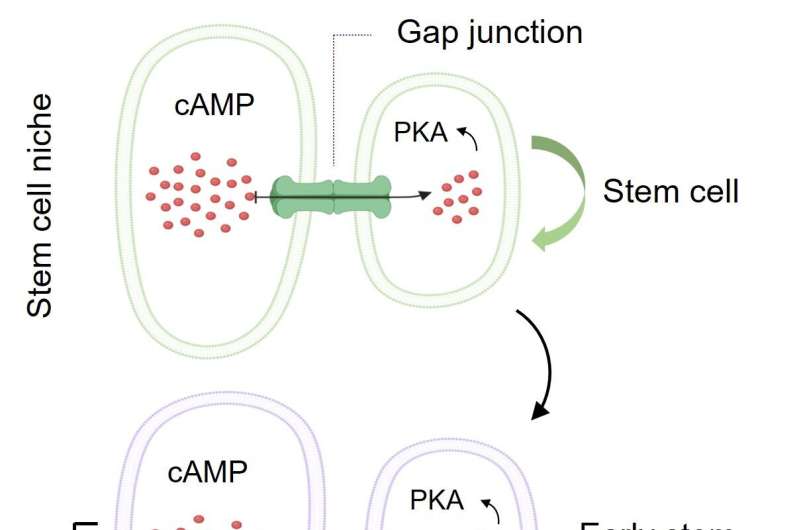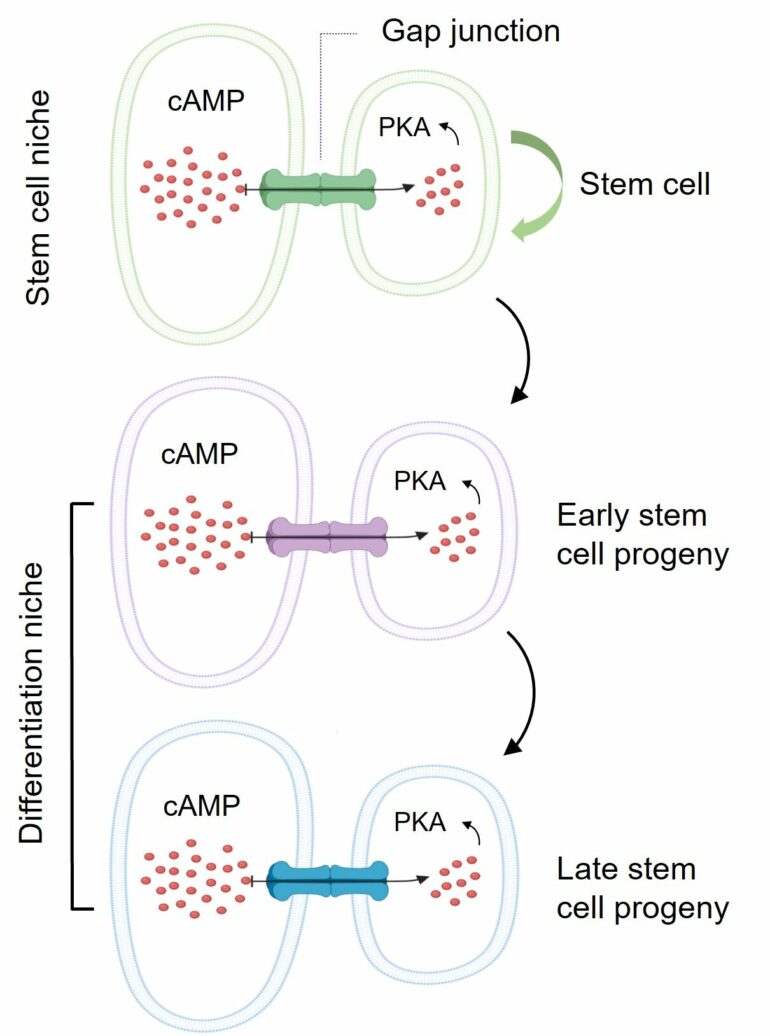Researchers at the Hong Kong University of Science and Technology (HKUST) have found how stem cells’ surrounding environment controls them to differentiate into functional cells, a breakthrough critical for using stem cells to treat various human diseases in the future.
Stem cells play a crucial role in supporting normal development and maintaining tissue homeostasis in adults. Their unique ability to replicate and differentiate into specialized cells holds great promise in treating diseases like Parkinson’s disease, Alzheimer’s disease and type I diabetes by replacing damaged or diseased cells with healthy ones.
Despite their potential therapeutic benefits, one of the major challenges for cell therapies lies in efficiently differentiating stem cells into functional cells to replace damaged cells in degenerative tissue. This task is particularly difficult due to the limited understanding of the underlying molecular mechanism by which the tissues around stem cells, known as the stem cell niche, guide stem cell progeny to differentiate into proper functional cell types.
Now, a team led by Prof. Xie Ting, Head and Chair Professor of HKUST’s Division of Life Science, has discovered for the first time, that the niche uses gap junctions (protein channels connecting stem cell progeny and the niche) to transport its cAMP into stem cell progeny to control their differentiation. cAMP is one of the most important secondary messengers in the cell to regulate many cellular functions, including stem cell differentiation.

A model of how stem cell niche uses the protein channels “Gap junctions” to transport its cAMP into stem cell progeny in controlling their differentiation into functional cells. © HKUST
Prof. Xie, who is also Kerry Holdings Professor of Science, used the Drosophila ovary as an experimental model to study how two niches control stem cell self-renewal and differentiation, respectively.
The knowledge on niche regulatory mechanisms can help guide stem cells to differentiate into proper cell types for transplantation into degenerative human tissues. It could also help reconstitute the niche for supporting transplanted stem cells and their differentiation into functional cells since degenerative diseases often destroy niches for stem cells and stem cell progeny.
Prof. Xie said, “The findings advance the frontier of knowledge in stem cell biology and regenerative medicine, laying the groundwork for the future application of stem cells in treating a wide range of human diseases. Going forward, we plan to explore if differentiation niches for human stem cells also use the gap junction-transported cAMP to control the differentiation into functional cells for stem cell therapy and try to uncover other gap junction-transported molecules from the niche.”
The study was a collaboration between researchers at HKUST and Stowers Institute of Medical Research. It was recently published in the journal, Proceedings of the National Academy of Sciences (PNAS).
More information:
Renjun Tu et al, Gap junction–transported cAMP from the niche controls stem cell progeny differentiation, Proceedings of the National Academy of Sciences (2023). DOI: 10.1073/pnas.2304168120
Provided by
Hong Kong University of Science and Technology
Citation:
Discovery of how stem cell niche guides differentiation into functional cells is a significant step towards therapies (2023, August 22)
